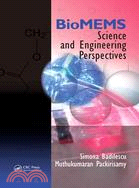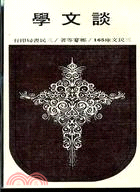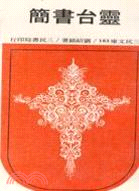Biomems: Science and Engineering Perspectives
商品資訊
ISBN13:9781439816998
出版社:CRC PRESS
作者:Muthukumaran Packirisamy; Simona Badilescu
出版日:2011/04/19
裝訂/頁數:精裝/368頁
定價
:NT$ 6930 元無庫存,下單後進貨(採購期約4~10個工作天)
下單可得紅利積點:207 點
商品簡介
作者簡介
目次
相關商品
商品簡介
As technological advancements widen the scope of applications for biomicroelectromechanical systems (BioMEMS or biomicrosystems), the field continues to have an impact on many aspects of life science operations and functionalities. Because BioMEMS research and development require the input of experts who use different technical languages and come from varying disciplines and backgrounds, scientists and students can avoid potential difficulties in communication and understanding only if they possess a skill set and understanding that enables them to work at the interface of engineering and biosciences.
Keeping this duality in mind throughout, BioMEMS: Science and Engineering Perspectives supports and expedites the multidisciplinary learning involved in the development of biomicrosystems. Divided into nine chapters, it starts with a balanced introduction of biological, engineering, application, and commercialization aspects of the field. With a focus on molecules of biological interest, the book explores the building blocks of cells and viruses, as well as molecules that form the self-assembled monolayers (SAMs), linkers, and hydrogels used for making different surfaces biocompatible through functionalization.
The book also discusses:
* Different materials and platforms used to develop biomicrosystems
* Various biological entities and pathogens (in ascending order of complexity)
* The multidisciplinary aspects of engineering bioactive surfaces
* Engineering perspectives, including methods of manufacturing bioactive surfaces and devices
* Microfluidics modeling and experimentation
* Device level implementation of BioMEMS concepts for different applications.
Because BioMEMS is an application-driven field, the book also highlights the concepts of lab-on-a-chip (LOC) and micro total analysis system (µTAS), along with their pertinence to the emerging point-of-care (POC) and point-of-need (PON) applications.
Keeping this duality in mind throughout, BioMEMS: Science and Engineering Perspectives supports and expedites the multidisciplinary learning involved in the development of biomicrosystems. Divided into nine chapters, it starts with a balanced introduction of biological, engineering, application, and commercialization aspects of the field. With a focus on molecules of biological interest, the book explores the building blocks of cells and viruses, as well as molecules that form the self-assembled monolayers (SAMs), linkers, and hydrogels used for making different surfaces biocompatible through functionalization.
The book also discusses:
* Different materials and platforms used to develop biomicrosystems
* Various biological entities and pathogens (in ascending order of complexity)
* The multidisciplinary aspects of engineering bioactive surfaces
* Engineering perspectives, including methods of manufacturing bioactive surfaces and devices
* Microfluidics modeling and experimentation
* Device level implementation of BioMEMS concepts for different applications.
Because BioMEMS is an application-driven field, the book also highlights the concepts of lab-on-a-chip (LOC) and micro total analysis system (µTAS), along with their pertinence to the emerging point-of-care (POC) and point-of-need (PON) applications.
作者簡介
Muthukumaran Packirisamy is a professor and research chair on Optical BioMEMS in the Department of Mechanical and Industrial Engineering at Concordia University in Canada. He is the recipient of the I.W. Smith award and fellow from the Canadian Society for Mechanical Engineering, the award for Best Researcher of the University, and the PetroCanada Young Innovator Award. He was also a member of the Canadian TaskForce on MEMS and Microfluidics. His research interest includes optical bioMEMS, integration of micro systems, and micro-nano integration.
Dr. Simona Badilescu is a senior scientist with a background in physical chemistry and a rich experience in teaching and research. She received her Ph.D. degree from the University of Bucharest (Romania) and specialized in molecular spectroscopy, surface science, and analytical applications of infrared spectroscopy. Presently, her research interest includes nanomaterials and their sensing applications.
Dr. Simona Badilescu is a senior scientist with a background in physical chemistry and a rich experience in teaching and research. She received her Ph.D. degree from the University of Bucharest (Romania) and specialized in molecular spectroscopy, surface science, and analytical applications of infrared spectroscopy. Presently, her research interest includes nanomaterials and their sensing applications.
目次
Introduction
Introduction to BioMEMS
Application Areas
Intersection of Science and Engineering
Evolution of Systems Based on Size
Commercialization, Potential, and Market
Substrate Materials Used in BioMEMS Devices
Metals
Glasses and Ceramics
Silicon and Silicon-Based Surfaces
Polymers
Biopolymers
Organic Molecules (Functional Groups) Involved in the Formation of Self-Assembled Monolayers
Biomolecules and Complex Biological Entities: Structure and Properties
Amino Acids
Polypeptides and Proteins
Lipids
Nucleotides and Nucleic Acids
Carbohydrates
Enzymes
Cells
Bacteria and Viruses
Engineering of Bioactive Surfaces
Plasma Treatment and Plasma-Mediated Surface Modification
Surface Modifications Mediated by Self-Assembled Monolayers (SAMs)
Langmuir-Blodgett and Layer-by-Layer Assembly
Biosmart Hydrogels
Immobilization and Detection of Biomolecules by Using Gold Nanoparticles: Case Studies
Biomimetic Surface Engineering
Attachment of Proteins to Surfaces
Surface Modification of Biomaterials for Tissue Engineering Applications
Temperature-Responsive Intelligent Interfaces
Methods of Study and Characterization of Surface-Modified Substrates
Contact Angle
Atomic Force Microscopy (AFM)
X-Ray Photoelectron Spectroscopy
Confocal Fluorescence Microscopy
Attenuated Total Reflection (Internal Reflection) Infrared Spectroscopy
Mechanical Methods: Use of Micro- and Nanocantilevers for Characterization of Surfaces
Biosensing Fundamentals
Biosensors
Immunoassays
Comparison between Biosensors and ELISA Immunoassays
Fabrication of BioMEMS Devices
Basic Microfabrication Processes
Micromachining
Soft Micromachining
Microfabrication Techniques for Biodegradable Polymers
Nanofabrication Methods
Introduction to Microfluidics
Fluid Physics at the Microscale
Methods for Enhancing Diffusive Mixing between Two Laminar Flows
Controlling Flow and Transport in Microfluidic Channels
Modeling Microchannel Flow
Experimental Methods
BioMEMS: Life Science Applications
Introduction to Microarrays
Microarrays Based on DNA
Polymerase Chain Reaction (PCR)
Protein Microarrays
Cell and Tissue-Based Assays on a Chip
Microreactors
Micro Total Analysis Systems (μTAS) and Lab-on-a-Chip (LOC)
Lab-on-a-Chip: Conclusion and Outlook
Microcantilever BioMEMS
Introduction to BioMEMS
Application Areas
Intersection of Science and Engineering
Evolution of Systems Based on Size
Commercialization, Potential, and Market
Substrate Materials Used in BioMEMS Devices
Metals
Glasses and Ceramics
Silicon and Silicon-Based Surfaces
Polymers
Biopolymers
Organic Molecules (Functional Groups) Involved in the Formation of Self-Assembled Monolayers
Biomolecules and Complex Biological Entities: Structure and Properties
Amino Acids
Polypeptides and Proteins
Lipids
Nucleotides and Nucleic Acids
Carbohydrates
Enzymes
Cells
Bacteria and Viruses
Engineering of Bioactive Surfaces
Plasma Treatment and Plasma-Mediated Surface Modification
Surface Modifications Mediated by Self-Assembled Monolayers (SAMs)
Langmuir-Blodgett and Layer-by-Layer Assembly
Biosmart Hydrogels
Immobilization and Detection of Biomolecules by Using Gold Nanoparticles: Case Studies
Biomimetic Surface Engineering
Attachment of Proteins to Surfaces
Surface Modification of Biomaterials for Tissue Engineering Applications
Temperature-Responsive Intelligent Interfaces
Methods of Study and Characterization of Surface-Modified Substrates
Contact Angle
Atomic Force Microscopy (AFM)
X-Ray Photoelectron Spectroscopy
Confocal Fluorescence Microscopy
Attenuated Total Reflection (Internal Reflection) Infrared Spectroscopy
Mechanical Methods: Use of Micro- and Nanocantilevers for Characterization of Surfaces
Biosensing Fundamentals
Biosensors
Immunoassays
Comparison between Biosensors and ELISA Immunoassays
Fabrication of BioMEMS Devices
Basic Microfabrication Processes
Micromachining
Soft Micromachining
Microfabrication Techniques for Biodegradable Polymers
Nanofabrication Methods
Introduction to Microfluidics
Fluid Physics at the Microscale
Methods for Enhancing Diffusive Mixing between Two Laminar Flows
Controlling Flow and Transport in Microfluidic Channels
Modeling Microchannel Flow
Experimental Methods
BioMEMS: Life Science Applications
Introduction to Microarrays
Microarrays Based on DNA
Polymerase Chain Reaction (PCR)
Protein Microarrays
Cell and Tissue-Based Assays on a Chip
Microreactors
Micro Total Analysis Systems (μTAS) and Lab-on-a-Chip (LOC)
Lab-on-a-Chip: Conclusion and Outlook
Microcantilever BioMEMS
主題書展
更多
主題書展
更多書展今日66折
您曾經瀏覽過的商品
購物須知
為了保護您的權益,「三民網路書店」提供會員七日商品鑑賞期(收到商品為起始日)。
若要辦理退貨,請在商品鑑賞期內寄回,且商品必須是全新狀態與完整包裝(商品、附件、發票、隨貨贈品等)否則恕不接受退貨。
























